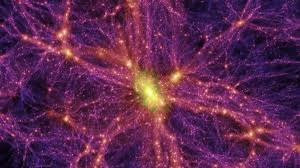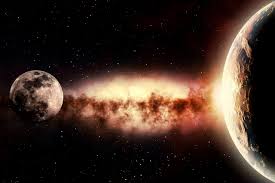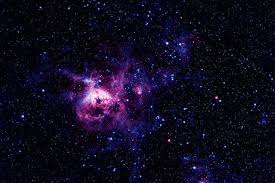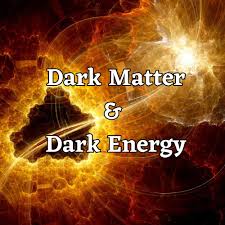Dark matter and dark energy
When we look up at the night sky, we only see a fraction of what actually exists in the universe. Stars, galaxies, and cosmic dust account for less than 5% of the total content of the universe. The rest—an astonishing 95%—is made up of dark matter and dark energy, two of the most mysterious components in modern astrophysics.

But what is dark matter? And what is dark energy? Despite being invisible and undetectable through conventional means, scientists know they exist due to their profound effects on the universe. In this article, we’ll break down the latest scientific understanding, popular theories, and the quest to unravel the biggest mystery in cosmology.
What Is Dark Matter?
The Invisible Matter Holding the Universe Together
Dark matter is a form of matter that does not emit, absorb, or reflect light, making it completely invisible. However, its presence can be inferred from its gravitational effects on visible matter, such as stars and galaxies.
Key Clues to Dark Matter’s Existence
- Galaxy Rotation Curves: In the 1970s, astronomer Vera Rubin discovered that stars at the edges of galaxies were rotating at the same speed as those near the center—something that shouldn’t happen unless there was extra unseen mass holding the galaxy together.
- Gravitational Lensing: Massive objects can bend light. Observations show light bending in ways that suggest much more mass is present than we can see.
- Cosmic Microwave Background (CMB): Subtle variations in the CMB radiation, the “afterglow” of the Big Bang, align with models that include dark matter.
What Is Dark Matter Made Of?
No one knows for sure, but several candidates have been proposed:
- WIMPs (Weakly Interacting Massive Particles): Hypothetical particles that interact via gravity and the weak nuclear force.
- Axions: Ultra-light particles that could solve several problems in quantum physics.
- Sterile Neutrinos: A proposed type of neutrino that doesn’t interact via the Standard Model forces.
Despite decades of research, dark matter has yet to be directly detected, making it one of the most pressing challenges in modern physics.
What Is Dark Energy?
The Mysterious Force Accelerating the Universe
While dark matter explains how galaxies hold together, dark energy explains why the universe is expanding at an accelerating rate. This discovery was made in 1998 by two teams observing distant supernovae. They expected the universe’s expansion to slow down due to gravity—but instead, it was speeding up.
Evidence for Dark Energy
- Type Ia Supernovae: These “standard candles” allowed astronomers to measure cosmic distances and determine that the expansion of the universe is accelerating.
- Cosmic Microwave Background (CMB): Observations show that the geometry of the universe is flat, which implies the presence of an unknown form of energy driving expansion.
- Large-Scale Structure of the Universe: Patterns in the distribution of galaxies suggest a repulsive force is influencing their movement.
What Could Dark Energy Be?
Several theories attempt to explain dark energy:
- Cosmological Constant (Λ): First introduced by Albert Einstein, this is a constant energy density filling space uniformly.
- Quintessence: A dynamic field that changes over time and space, unlike the cosmological constant.
- Modifications to General Relativity: Some physicists argue that we may need to revise our understanding of gravity to explain cosmic acceleration.
Dark energy makes up about 68% of the total energy content of the universe, yet its exact nature remains elusive.

Dark Matter vs. Dark Energy: Key Differences
| Feature | Dark Matter | Dark Energy |
|---|---|---|
| Composition | Unknown particles (WIMPs, axions, etc.) | Possibly a vacuum energy or scalar field |
| Function | Adds gravitational pull, keeps galaxies intact | Opposes gravity, drives cosmic expansion |
| Discovery Evidence | Galaxy rotation curves, gravitational lensing | Accelerated expansion via supernovae |
| Estimated Contribution to Universe | ~27% | ~68% |
Despite their names, dark matter and dark energy are fundamentally different phenomena with opposite effects on the cosmos.
How Do Scientists Study Dark Matter and Dark Energy?
Although invisible, both dark matter and dark energy leave detectable footprints. Here are the key methods scientists use:
1. Particle Colliders
Facilities like the Large Hadron Collider (LHC) attempt to recreate conditions similar to the Big Bang to produce hypothetical dark matter particles.
2. Direct Detection Experiments
Deep underground laboratories like XENON1T or LUX-ZEPLIN (LZ) are designed to detect rare interactions between dark matter and regular matter.
3. Astronomical Surveys
Projects like the Dark Energy Survey (DES) and the upcoming Euclid Mission map the distribution of galaxies and dark matter over time to understand the role of dark energy in cosmic evolution.
4. Cosmic Microwave Background Analysis
Satellites such as WMAP and Planck have provided detailed maps of the CMB, helping scientists calculate the exact proportions of dark matter and dark energy.
Why Do Dark Matter and Dark Energy Matter?
Understanding these invisible components is crucial for multiple reasons:
- Fundamental Physics: They may reveal new physics beyond the Standard Model.
- Fate of the Universe: Dark energy’s properties could determine whether the universe expands forever or ends in a “Big Rip.”
- Technological Innovation: The tools developed for these discoveries (like advanced detectors) often have applications in medicine, engineering, and computing.
Solving the puzzle of dark matter and dark energy could redefine our understanding of the universe itself.
Popular Misconceptions About Dark Matter and Dark Energy
“They’re Just Theories”
In science, a theory is not a guess—it’s a well-substantiated explanation. While dark matter and dark energy have not been directly observed, their gravitational and cosmological effects are supported by overwhelming evidence.
“They’re the Same Thing”
They are not. Dark matter pulls matter together, while dark energy pushes space apart.
“We’re Close to Figuring It Out”
Although progress has been made, the true nature of both remains unknown. They represent some of the greatest frontiers in physics.

The Future of Dark Universe Research
The next decade promises exciting developments in dark matter and dark energy research:
- James Webb Space Telescope (JWST): Offers infrared insights into the early universe.
- Euclid Mission (ESA): Will map billions of galaxies to study dark energy.
- Vera C. Rubin Observatory: Will conduct a 10-year survey of the sky, helping to refine dark matter models.
With new data and powerful tools, scientists hope to move closer to unraveling these cosmic mysteries.
Conclusion: The Final Frontier of Cosmic Discovery
Dark matter and dark energy may be invisible, but their impact on the cosmos is profound. They hold galaxies together, shape the structure of the universe, and dictate its ultimate fate. While we’ve made significant strides in understanding their effects, their true nature remains one of the most tantalizing puzzles in science.
As researchers continue to push the boundaries of knowledge, one thing is clear: the universe is far stranger and more wonderful than we ever imagined.
Read more:https://nfds.xyz/wp-admin/post.php?post=50&action=edit



